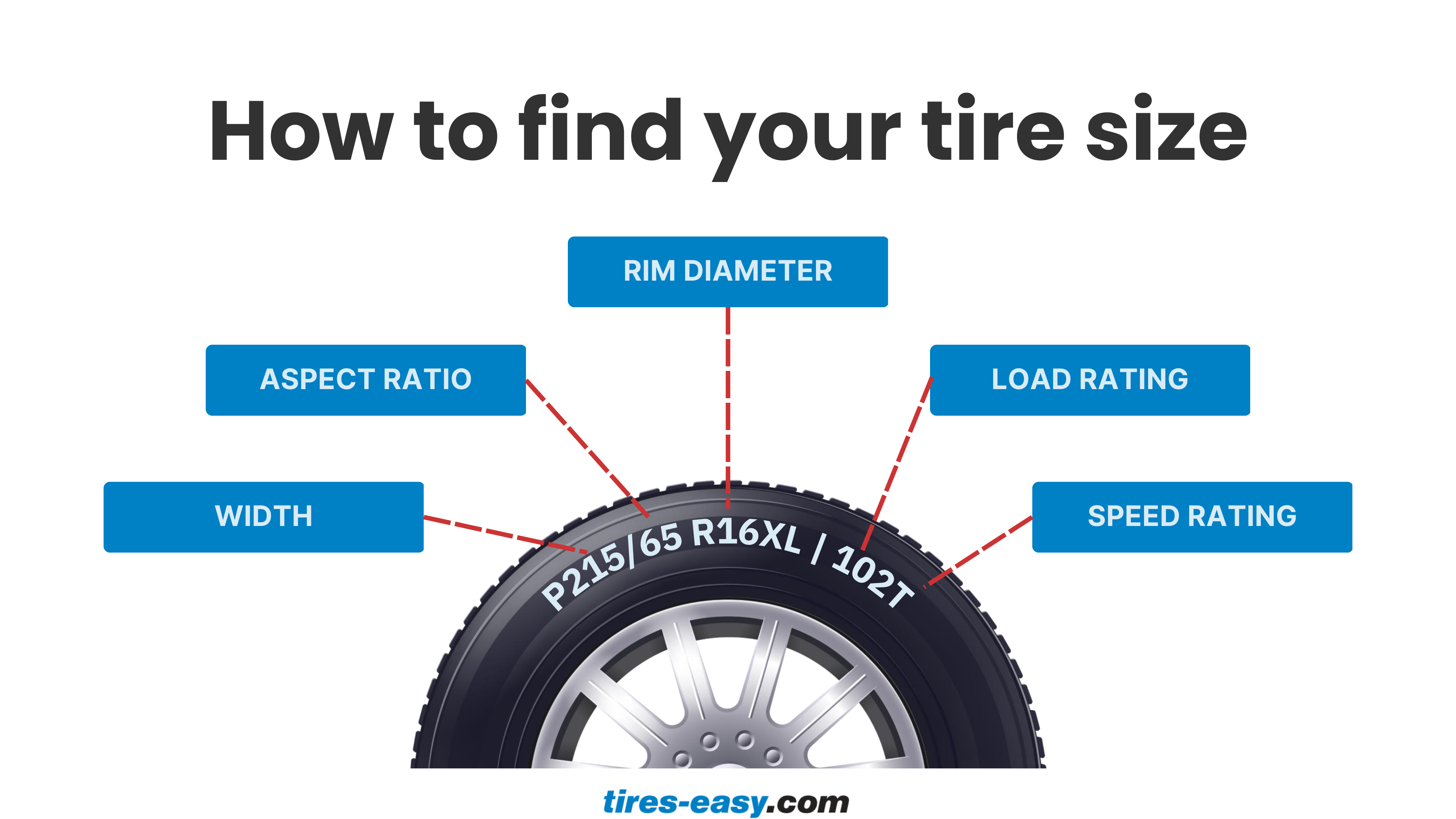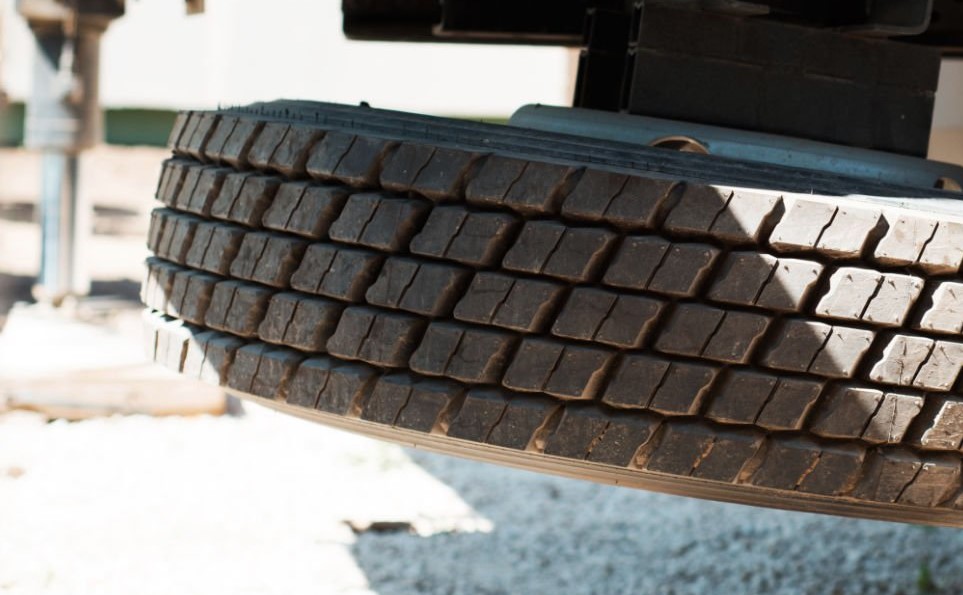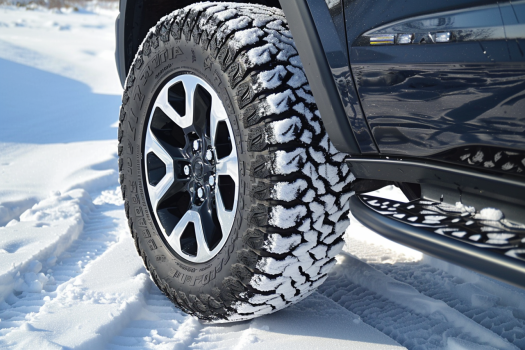Last Updated on July 19, 2025
Introduction to Tire Sizing
Choosing the correct tire size is not merely a matter of aesthetics or preference; it is a crucial factor affecting a vehicle’s safety, performance, and efficiency. Understanding tire sizing involves deciphering numbers and letters imprinted on the tire’s sidewall, each providing important information about the tire’s specifications and capabilities.
Understanding the Importance of Correct Tire Size
Selecting the correct tire size is critical for numerous reasons:
- Safety: The right-sized tire ensures proper vehicle handling and braking. Incorrectly sized tires can lead to a loss of traction, increased stopping distances, and a higher likelihood of blowouts or tire failure.
- Vehicle Performance: Tires are designed to complement a vehicle’s performance characteristics. The wrong size can negatively affect acceleration, cornering, and overall stability.
- Fuel Efficiency: Properly sized tires are optimized for the best fuel economy for the vehicle. Oversized or undersized tires can increase rolling resistance, which may lead to higher fuel consumption.
- Speedometer and Odometer Accuracy: The diameter of a tire directly affects how speed and distance are calculated. A size mismatch can lead to incorrect readings on your vehicle’s speedometer and odometer.
A Brief History of Tire Size Standards
Tire sizing standards emerged as the automotive industry grew, and the need for interchangeability and safety became apparent. Initially, tire sizing was inconsistent, making replacing tires confusing for vehicle owners.
Over time, industry organizations established standards to create a common language for tire sizing:
The Tire and Rim Association (TRA) in the United States, established in 1903, sets forth guidelines for tire sizing and measurements.
The European Tyre and Rim Technical Organisation (ETRTO), established in 1964, provides a similar standardization framework in Europe.
These standards have been adopted internationally and provide a consistent format for global tire sizing. Today’s sizing system is metric mainly, specifying tire width, aspect ratio, internal construction, and diameter of the rim that it fits.
Understanding tire sizing is not just about knowing which tire fits your car—it’s about appreciating tires’ role in your vehicle’s overall safety and performance. By adhering to tire size standards and recognizing the importance of selecting the correct size, drivers can maintain the integrity of their vehicle’s performance and ensure their safety on the road.
Basics of Tire Size Terminology
Navigating the world of tire sizes can seem daunting at first, but understanding the basic terminology can significantly demystify the process. This knowledge is essential for any vehicle owner, as it impacts road safety, handling, and legality.
Decoding Tire Size Notations
A tire’s size notation is usually a combination of letters and numbers that provide vital information about the tire’s specifications. Here’s a breakdown of what these symbols mean, using the typical P215/65R15 95H example:
When it comes to maintaining or replacing your vehicle’s tires, one of the first steps is determining the correct tire size. The size of your tires is critical information affecting numerous aspects of driving performance, from handling to fuel efficiency to safety. Here’s how to find that information.
Reading the Sidewall of Your Tire
The most straightforward method to locate your tire size is by reading the information on the sidewall of your tire. Every tire has an alphanumeric code that tells you the size and provides information about the tire’s capabilities. This code can be found on the outer side of the tire and is usually molded into the rubber.
The code might look something like this: P215/65R16XL 102T
P: Type of tire (Passenger tire)
The letter at the beginning indicates the type of vehicle the tire is meant for. “P” stands for passenger vehicle tire. Other designations include “LT” for Light Truck, “T” for Temporary (as in spare tires), and “ST” for Special Trailer.
215: Width of the tire in millimeters
This three-digit number represents the tire’s width from one sidewall to another in millimeters. In our example, the tire is 215 millimeters wide.
65: Aspect ratio of the height to the width
Following the slash, the two-digit number represents the aspect ratio of the sidewall height to the tire’s width. In this case, the sidewall height is 65% of the tire’s width. A lower number indicates a shorter sidewall for high-performance tires, and a higher number usually denotes a taller sidewall, often found in touring tires.
R: Construction type (Radial)
The letter after the aspect ratio indicates the tire’s construction, with “R” standing for radial construction. This means the tire’s internal ply cords are arranged in a radial direction, from one bead across to the other, which is standard for most tires today. You might encounter different types: “D” for diagonal construction and “B” for belted.
16XL: Wheel RIM diameter in inches
This number is the diameter of the wheel in inches that the tire is intended to fit. In our example, the tire is designed to provide a 16-inch wheel.
102: Load rating
This number corresponds to the maximum load the tire can safely support when properly inflated. Load indexes range from the most miniature tires (typically 70 or less) to the largest (125 or greater).
T: Speed rating
The speed rating is a single letter that indicates the maximum speed the tire can safely maintain over time. “T” in this example suggests the tire can safely handle rates up to 130 mph. Speed ratings range from “A” (the lowest) to “Y” (the highest).

The sidewall also contains other symbols and numbers, including the Department of Transportation (DOT) code, which indicates the tire meets all federal standards; the load range, showing the maximum weight the tire can carry; and the traction and temperature grades.
Understanding each part of the tire size is crucial when selecting new tires. It ensures compatibility with the vehicle and affects overall performance and safety.
Metric vs. Imperial Measurements
Most tire sizes are presented in metric measurements, the international standard, denoted in millimeters and inches for the diameter.
However, the United States also uses an older system for some types of tires, such as truck and off-road vehicle tires, which are often expressed in inches for all dimensions (e.g., “33×12.50R15,” where 33″ is the tire diameter, 12.50″ is the tire width, and 15″ is the rim diameter).
In summary, understanding tire size terminology is foundational for any driver or vehicle owner. It not only helps in making informed decisions about tire purchases but also assists in maintaining the vehicle’s performance and safety profile.
Correct tire size affects the vehicle’s handling characteristics, fuel efficiency, and even the accuracy of speedometer and odometer readings. Whether replacing a worn-out tire or upgrading for performance, knowing these basics is the first step toward making an intelligent tire choice.
Tire Size Indicators and What They Mean
Each portion of the tire size code carries specific information about the tire’s construction and performance capabilities:
- Width: Wider tires can give better traction but also affect fuel efficiency.
- Aspect Ratio: A lower number indicates a performance tire designed for better handling and a firmer ride, while a higher number means a tire designed for comfort.
- Construction: The “R” in radial means layers run radially around the tire, which is standard for most tires. Other types, such as “D” for diagonal or bias ply, are less common.
- Diameter: This number must match the wheel size on which the tire will be mounted.
- Load Index and Speed Rating: These are safety-related and should meet or exceed the vehicle manufacturer’s specifications.
Interpreting Load Index and Speed Rating
The load index corresponds to the maximum weight a tire can support when properly inflated. For instance, a load index 95 corresponds to a load capacity of 1,521 pounds per tire. You can usually find a chart to translate load index numbers to pounds or kilograms.
The speed rating is a letter corresponding to the maximum speed a tire can sustain over time. For example, an “H” rating signifies that the tire is safe for rates up to 130 mph. These ratings are essential for maintaining the safety and performance characteristics that the vehicle manufacturer intended.
Checking Vehicle Placards for Tire Size
If the tire sidewall is worn or the print is too small, the vehicle placard is another reliable place to look. This label is usually on the driver’s side door jamb, the glove box lid, or the fuel hatch. It will list the proper tire size and the recommended tire pressure. The vehicle manufacturer places this placard and is specific to the vehicle model.
For optimal performance and safety, adhere to the tire size and specifications listed on the vehicle placard. Any variations should only be made after consulting a tire professional or the vehicle manufacturer.
Locating tire size information is a simple process that can significantly affect your vehicle’s performance and safety. It’s vital to check the tire size before purchasing new tires, and always refer to the vehicle’s manual or the placard for accurate information. Ensuring your tires are the correct size for your car ensures that the handling, fuel efficiency, and safety systems perform as designed.
Using Your Vehicle’s Manual
The owner’s manual is an invaluable resource for understanding your vehicle’s specific needs and recommendations. This is particularly true for tire specifications, which are crucial for maintaining your vehicle’s performance and safety. Let’s delve into the specific aspects of using your vehicle’s manual to find and understand tire information.
Finding Tire Specifications in the Owner’s Manual
The vehicle’s owner’s manual is the best starting point for finding tire specifications because it provides information tailored to your vehicle’s make, model, and year. Here’s how to find and interpret the tire information:
- Locate the tire section: Typically, there will be a dedicated section for tires under headings such as “Maintenance,” “Specifications,” or directly under “Tires.”
- Decoding the information: Within this section, look for charts or lists that indicate the tire size, load index, and speed rating. The tire size will appear in a format such as P225/50R16 91V, where “P” stands for a Passenger tire, “225” is the tire width in millimeters, “50” is the aspect ratio, “R” indicates radial construction, “16” is the wheel diameter in inches, “91” is the load index, and “V” represents the speed rating.
- Pressure specifications: The manual will also list the recommended tire pressure for front and rear tires under different loading conditions.
- Special notes: Some manuals may include notices about preferred brands or additional tire features ideal for your vehicle.
Why Consult the Vehicle Manual for Tire Size?
The manual should be the primary reference for tire size for several reasons:
- Manufacturer Specifications: It provides the exact tire size that the vehicle’s manufacturer recommends and has been extensively tested during design and manufacturing.
- Warranty Compliance: Following the manufacturer’s recommended tire sizes ensures the vehicle’s warranty compliance. Using incorrect tire sizes could potentially void the warranty.
- Optimal Performance: The manufacturer’s recommended tire size will provide the best overall performance, including handling, ride comfort, and fuel efficiency.
- Additional Tire Information in the Manual
- Beyond the primary size and pressure recommendations, the manual may offer further guidance on the following:
- Tire replacement: Information on choosing replacement tires, including brands and models, if the manufacturer has specific recommendations.
- Tire repair: Instructions on using tire repair kits or procedures in case of a puncture.
- Seasonal tire changes: If you live in a region with variable climate conditions, consider winter or all-season tires.
Understanding OEM Tire Size Recommendations
OEM stands for Original Equipment Manufacturer, which means the recommendations provided are from the company that built your vehicle. Understanding these recommendations is essential:
- Why OEM recommendations matter: OEM tire sizes are determined after extensive testing to ensure that they offer your vehicle the best balance of performance, safety, and efficiency.
- Safety: The recommended tire size ensures that the tires have the correct load capacity and speed rating for your vehicle, which is critical for safe vehicle handling and operation.
- Performance: OEM tires are chosen to complement the suspension design and the vehicle’s intended use, whether for comfort, sport, or economy.
- Vehicle systems: Many modern vehicles have advanced systems like anti-lock brakes (ABS) and electronic stability control (ESC), calibrated to work with a specific tire size. Deviating from OEM recommendations can affect how these systems perform.
- Warranty: Sticking to OEM recommendations also ensures that you remain compliant with any vehicle warranty terms related to tire size and performance.
By adhering to the specifications in your owner’s manual, you maintain the manufacturer’s intent for how your vehicle should drive and perform. It’s not just about the size but also about understanding the reasoning behind the design choices made by the manufacturer. For instance, a vehicle designed for off-road performance may have tires with different specifications than one designed for maximum fuel efficiency.
In summary, your vehicle’s owner’s manual is essential for maintaining and understanding your vehicle’s tire needs. Always refer back to it for the most accurate and safe tire specifications. It ensures that your car operates safely and as designed, whether for daily commuting, long-distance travel, or exceptional performance conditions.
Checking Vehicle Placards for Tire Size
When it comes to tire maintenance and replacement, one of the most critical steps is ensuring you have the correct tire size for your vehicle. The tire information placard—a label found in every car—provides a wealth of information about the tires the manufacturer recommends. It’s a quick reference guide for tire size, pressure, and load ratings.
Where to Find the Tire Information Placard
The tire information placard is typically located in several possible places within your vehicle:
- Driver’s side door edge or door post (pillar): When you open the driver’s side door, look at the edges or the position where the door latches when it is closed.
- Glove box: Open the glove box and look inside for any labels affixed to the box’s surface.
- Trunk lid: In some vehicles, the placard can be found inside the trunk lid.
- Fuel filler door: Some manufacturers place the sticker inside the fuel filler door.
It’s important to note that the placard is a permanent label, meaning it should always be legible and accessible throughout the vehicle’s life. If, for some reason, the placard needs to be added or readable, consult the owner’s manual for the same information or contact the dealership.
Deciphering the Placard Information
Once you’ve found the tire information placard, you’ll notice it contains several pieces of information:
- Tire size designation: This includes the wheel’s width, aspect ratio, and diameter. For example, it may read something like “225/65R17”, which denotes the tire’s width, aspect ratio, and the wheel diameter it fits.
- Load index: This number corresponds to the maximum weight each tire can safely support. A higher number indicates a greater load capacity.
- Speed rating: Represented by a letter, the speed rating tells the maximum service speed for a tire. For example, “T” indicates a top speed of 118 mph.
- Tire pressure: The placard also provides the recommended tire pressure for front and rear tires, often in Pounds per Square Inch (PSI) and Kilopascals (kPa).
Understanding this information is critical to maintaining your vehicle’s handling, fuel efficiency, and safety.
Online Resources and Tools
Finding the correct tire size for your vehicle is crucial for ensuring optimal performance and safety. Online resources and tools have made this task more accessible than ever. From calculators that help convert metric tire sizes to guides that explain the nuances of tire codes, these tools are invaluable for both novices and seasoned car enthusiasts.
Reliable Online Tire Size Calculators
Reliable online tire size calculators allow users to input their vehicle’s details or existing tire sizes to find alternate sizes that fit their car. Some notable calculators include:
- Tire Size Converter Tools: These calculators can convert the traditional tire size (expressed in inches) to metric dimensions. This is particularly useful for classic car owners looking to modernize their wheel setups.
- Plus Sizing Calculators: For those interested in plus sizing their wheels, increase the tires’ size while maintaining the wheel-tire combination’s overall diameter. These tools can suggest new tire sizes that will maintain accurate speedometer readings and proper vehicle clearance.
- Sidewall Calculator: This is used to understand the implications of the aspect ratio changes on your vehicle’s performance and appearance.
These tools are often provided by tire manufacturers like Goodyear and Michelin and tire retailers such as Tire Rack and Discount Tire. They offer an easy-to-use interface and provide immediate results.
How to Use Online Tire Size Guides
Online tire size guides break down the complex code that makes up a tire size into understandable terms. Here’s how to use them effectively:
- Enter Your Vehicle Information: Enter details like your vehicle’s make, model, and year. This information helps the guide provide certified tire sizes to fit your vehicle.
- Interpret the Codes: The guide will explain what each part of the tire code means, from the tire’s width in millimeters to the wheel’s diameter in inches.
- Learn About Tire Types: These guides also often provide information about different types of tires (such as all-season, performance, or winter) available in your tire size.
The Role of Tire Size in Online Tire Selection Tools
Tire size is the starting point in online tire selection tools. Here’s why it’s critical:
- Ensures Compatibility: The tire size ensures the options fit your vehicle without modifications or safety issues.
- Refines Search Results: It narrows the overwhelming number of tire options to a manageable number you can realistically choose from.
- Aligns With Vehicle Performance: Proper tire size is essential to maintain the vehicle’s handling characteristics, fuel efficiency, and overall performance.
It is essential to consult multiple sources to ensure the information is consistent when using online tools. Furthermore, these tools should be a guide rather than the final word. Once you have a selection of tire sizes, it’s wise to:
When to Consult a Professional
While many tire-related tasks can be managed independently with the right tools and knowledge, certain situations demand the expertise of a professional. Knowing when to consult a tire expert can save time, ensure safety, and prevent costly mistakes.
Situations Requiring Professional Assistance
There are several scenarios where the expertise of a tire professional is indispensable:
- Complex Fitment Issues: If your vehicle requires a tire size that is not standard, or if you’re considering plus-sizing your tires, a professional can guide you through the correct specifications and potential modifications.
- Performance Upgrades: When upgrading tires for better performance, a professional can advise on the best type of tire considering the vehicle’s use, whether for improved handling, racing, or off-road use.
- Damaged Tires: Any tire that has sustained damage, mainly if it’s sidewall damage or punctures larger than 1/4 inch, should be inspected by a professional to determine if it needs to be repaired or replaced.
- Tire Wear Issues: Uneven tire wear can indicate alignment, suspension, or steering problems. A tire professional can diagnose the issue and suggest the appropriate action.
- Seasonal Changeovers: Professionals can ensure that seasonal changeovers, such as switching to winter tires, are done correctly and that the tires are properly balanced and aligned.
- Tire Aging: Tires over six years old may need replacing, even if they look fine. A tire professional can inspect the tires for signs of aging that are not always apparent to the untrained eye.
Finding a Trusted Tire Advisor
Identifying a trusted tire advisor is crucial to receiving reliable and unbiased information. Here’s how you can find one:
- Ask for Recommendations: Word of mouth is powerful. Ask friends, family, or coworkers where they take their vehicles for tire services.
- Check Credentials: Look for shops where the technicians are certified by recognized bodies, such as the National Institute for Automotive Service Excellence (ASE) in the United States.
- Read Reviews: Online reviews on platforms like Google, Yelp, or specialized automotive forums can provide insights into other customers’ experiences.
- Consult Local Forums and Groups: Local car enthusiasts or online forums often share information about trustworthy shops.
- Visit Multiple Shops: Before settling on a service provider, visit several to compare the advice, customer service, and cleanliness of the shop.
A professional tire advisor should be willing to explain issues clearly, provide multiple options, and not pressure you into unnecessary purchases. They should also be up-to-date with the latest tire technologies and trends to give informed advice. Their goal should be to ensure your safety and the optimal performance of your vehicle.
Remember that while it is tempting to save money by doing tire maintenance yourself or ignoring minor issues, tires are critical to your vehicle’s safety and performance. Therefore, investing in professional advice when needed is a wise and necessary aspect of vehicle maintenance.
Upgrading or Changing Tire Sizes
Vehicle owners must tread carefully when upgrading or changing tire sizes. While a different tire size can enhance a vehicle’s appearance, performance, or capabilities, it can also have significant repercussions if not done correctly. Understanding the implications of changing tire sizes is essential before making any decisions.
Considering Alternative Tire Sizes
Before considering alternative tire sizes, you should understand why you want to change from the original size. Some common reasons include:
- Improved Appearance: Larger rims and tires can give a vehicle a more aggressive stance.
- Enhanced Performance: Wider tires offer better traction for performance vehicles, while taller tires benefit off-road vehicles.
- Cost: Sometimes, owners opt for a more common tire size to reduce replacement costs.
- Here’s what to consider when looking at alternative tire sizes:
- Overall Diameter: The combined height of the tire and wheel should remain as close to the original as possible to maintain speedometer accuracy and vehicle dynamics.
- Width and Clearance: Wider tires can interfere with the vehicle’s body or suspension components. Ensure there is enough clearance in the wheel wells.
- Load Rating: The tire should be capable of supporting the vehicle’s weight to avoid tire failure.
- Speed Rating: Especially important for performance vehicles, the tire should be able to handle the vehicle’s top speed safely.
Understanding the Impact of Changing Tire Sizes
Altering tire sizes affects various aspects of vehicle performance:
- Handling: Larger tires can improve grip but might also make the steering less responsive.
- Acceleration and Speedometer Reading: A larger overall diameter can cause slower acceleration and an incorrect speedometer reading.
- Fuel Efficiency: Heavier or larger tires can reduce fuel economy due to increased rolling resistance.
- Ride Comfort: Larger wheels may reduce ride comfort due to a decrease in the tire’s sidewall height.
To mitigate these impacts, consult tire size comparison tools online that can show the differences between your current tire size and the new one you are considering. These tools can calculate the differences in diameter, width, and circumference.
Legal and Safety Considerations
When changing tire sizes, you must also consider the legal and safety implications:
- Legal Compliance: Some jurisdictions have laws regulating how much tire sizes can vary from the manufacturer’s specifications. Ensure you are within legal limits to avoid fines.
- Insurance: Inform your insurance company of the change. Failure to do so may affect your coverage in the event of an accident.
- Warranty: Changing tire sizes could void the warranty on specific vehicle components.
- Safety: Properly matched tires are crucial for the vehicle’s safety systems, like ABS and stability control, to function correctly.
In summary, upgrading or changing tire sizes is not a decision to be taken lightly. It requires thorough research, a good understanding of how tires affect vehicle dynamics, and an appreciation for the legal and safety aspects. When in doubt, consulting a professional is the best course to ensure that any changes are beneficial and do not compromise the vehicle’s safety or legality.
Common Mistakes to Avoid
When dealing with tire sizes, whether replacing old tires, upgrading, or simply checking your vehicle’s specifications, several common pitfalls can lead to safety issues, decreased performance, or added costs. Awareness of these mistakes can ensure you choose the right tires for your vehicle.
Misreading Tire Size Numbers
Tire size numbers are not just random digits; they represent specific dimensions and characteristics of the tire. A typical tire size might read something like this: 225/50R16. Here’s what each part means:
- 225 is the tire’s width in millimeters from sidewall to sidewall.
- 50 is the aspect ratio, the height of the tire’s sidewall as a percentage of its width. In this case, the sidewall height is 50% of 225 mm.
- R indicates the tire’s construction type; R stands for radial.
- 16 is the diameter of the wheel in inches that the tire is designed to fit.
Misreading these numbers can lead to purchasing tires that don’t fit your vehicle or negatively affect its performance. It’s crucial to double-check these numbers against your vehicle’s specifications.
Overlooking Load Index and Speed Rating
The load index and speed rating are often overlooked but are as important as the size numbers. The load index is a numerical code associated with the maximum load a tire can carry, while the speed rating indicates the top speed at which a tire can safely travel.
For instance, a tire marked with ’91V’:
- 91 is the load index. In this case, the tire can safely support 615 kilograms.
- V is the speed rating, which means the tire can handle speeds up to 149 miles per hour.
Ignoring these ratings can lead to tire failure under heavy loads or high speeds, resulting in dangerous driving conditions. Always match or exceed the load index and speed rating on your vehicle’s original tires.
Ignoring Vehicle Manufacturer’s Recommendations
Vehicle manufacturers spend significant time determining the optimal tire size for performance, safety, and fuel efficiency. Ignoring these recommendations can lead to several problems, such as:
- Handling Issues: The wrong tire size can adversely affect the vehicle’s handling, making it more difficult to control in emergencies.
- Increased Wear on Vehicle Components: Inappropriate tire sizes can stress suspension and steering components extra, leading to premature wear.
- Voided Warranty: If your vehicle is under warranty, changing to a non-recommended tire size can sometimes void the warranty, leaving you responsible for any related repairs.
The vehicle’s owner manual and the tire information placard, typically found on the driver’s side doorjamb, provide the manufacturer’s tire size, load index, and speed rating recommendations. Always consult these before purchasing new tires.
By avoiding these common mistakes, you can help ensure that your vehicle operates safely, performs well, and complies with legal and warranty requirements. When in doubt, consult a tire professional who can provide advice tailored to your vehicle and driving needs.
Maintaining Proper Tire Size
Maintaining the proper tire size for your vehicle is critical for ensuring optimal performance, safety, and longevity of your vehicle’s tires and other components. Understanding the importance of regular checks and balances and the impact tire size has on vehicle performance is essential for any vehicle owner.
Regular Checks and Balancing
Regular Inspections: Inspecting your tires is crucial to identify any issues that could alter their size and shape, such as uneven wear patterns, bulges, or underinflation. It’s recommended that tires should be checked at least once a month.
- Tire Pressure: It is fundamental to keep tires inflated to the correct pressure. Underinflated or overinflated tires can affect vehicle handling and lead to tire damage. The proper pressure levels are usually found in the vehicle’s manual or the tire placard.
- Tire Rotation: Tires should be rotated every 5,000 to 8,000 miles to promote even tire wear. This helps maintain the tire’s shape and size consistency, which affects how it interacts with the vehicle and the road.
- Wheel Balancing: Wheels should be balanced when tires are installed at regular intervals or if there are signs of imbalance. An unbalanced tire can cause vibration, uneven tire wear, and additional strain on your vehicle, affecting performance and fuel efficiency.
- Alignment Checks: Poor alignment can cause tires to wear unevenly and prematurely. Regular alignment checks ensure that tires are correctly aligned, which helps maintain the correct tire shape and size.
Impact of Tire Size on Vehicle Performance
Handling: The tire size can significantly affect the vehicle’s handling. Tires that are too large or too small can change the vehicle’s response to steering, braking, and accelerating.
- Speedometer and Odometer Readings: If tire sizes are not in line with the manufacturer’s specifications, the speedometer and odometer readings can be inaccurate, as they are calibrated based on the rotational characteristics of the recommended tire size.
- Transmission and Drive Train: Incorrect tire size can affect transmission shift patterns and drive train performance. Proper tire size helps ensure that these components work together efficiently.
- Suspension: The vehicle’s suspension system is designed for a specific tire size. Deviating from this can result in poor ride quality and increased wear on suspension components.
- Safety Systems: Tire size also plays a role in correctly functioning safety systems such as ABS and traction control. The correct tire size ensures these systems receive accurate information to perform as designed.
In conclusion, maintaining the proper tire size through regular checks and balances is vital for your vehicle’s performance and safety. Tires are the only point of contact with the road, and their condition, pressure, and size directly influence how your vehicle handles, fuel efficiency, and overall safety.
By ensuring that your tires are correctly sized, properly inflated, and in good condition, you’re not only prolonging the life of your tires but also enhancing the dynamic capabilities of your vehicle and protecting yourself and your passengers. Remember to consult your vehicle’s manual and a professional when necessary to keep your car running smoothly and safely.
Conclusion & Recommendations
Before we close out our comprehensive guide, let’s quickly recap the essential takeaways about tire sizing:
- Understanding Tire Size Terminology: It’s imperative to know how to read tire sizes, which are composed of letters and numbers that denote the tire’s width, aspect ratio, and diameter.
- Locating Tire Size Information: This information can typically be found on the sidewall of your tires and the tire information placard inside your vehicle’s door frame.
- Using Your Vehicle’s Manual: The owner’s manual is crucial for finding the manufacturer’s recommended tire size and specifications for your vehicle.
- Checking Vehicle Placards for Tire Size: Always check the tire placard on the driver’s side door jamb for accurate tire size and inflation pressure.
- Online Resources and Tools: Utilize online calculators and size guides to understand the specifications and fitment of different tire sizes.
- Consulting a Professional: When in doubt, seeking professional advice ensures you select the correct tires for your vehicle and driving needs.
- Upgrading or Changing Tire Sizes: Be mindful of the implications of changing tire sizes and consult with experts to maintain safety and performance standards.
- Common Mistakes to Avoid: Avoid misreading numbers, overlooking load and speed ratings, and ignoring the vehicle manufacturer’s recommendations.
- Maintaining Proper Tire Size: Regular checks and balances, such as inspections, tire rotations, and balancing, are crucial for tire maintenance.
The Importance of Sticking to the Correct Tire Size
Adhering to the correct tire size is not just a recommendation; it’s a cornerstone of vehicle safety and performance. The correct tire size ensures:
- Optimal Handling and Stability: Correct tire sizes provide the foundation for your vehicle’s handling characteristics, offering stability during various driving maneuvers.
- Accurate Speedometer Readings: The diameter of your tires directly affects the accuracy of your speedometer and odometer; deviations can lead to incorrect readings.
- Proper Vehicle Performance: Tire size impacts everything from acceleration to braking efficiency, influencing overall vehicle performance.
- Fuel Efficiency: The right tire size can help maintain your vehicle’s fuel efficiency, as incorrect sizes can increase rolling resistance.
- Suspension Compatibility: Vehicle suspensions are tuned for specific tire dimensions; mismatched sizes can cause unnecessary wear and discomfort.
- Safety System Integration: Advanced safety systems, from anti-lock brakes to traction control systems, rely on tire size data to function correctly.
Find Your Best Tire at Tires Easy
With the critical points of tire sizing covered, you’re better equipped to make informed decisions about your vehicle’s tires. Understanding the importance of the correct tire size is just the beginning. Choosing the right retailer is equally essential to ensure you get the best performance, safety, and longevity out of your tires.
At Tires Easy, we make it simple to find the perfect tires for your vehicle. Whether you’re looking for the exact size recommended by your vehicle’s manufacturer or considering an upgrade, our extensive selection covers you.
Ready to find your perfect match?
Don’t let tire shopping be a complex chore. With our user-friendly website, knowledgeable customer service, and competitive prices, Tires Easy is your one-stop shop for all your tire needs. Click on our call to action button below to explore our range and take the first step towards enhanced performance and safety on the road.
Remember, the right tires are just a click away. Safe travels and happy driving!
FAQs
What is my tire size?
Your tire size is indicated by a series of numbers and letters printed on the sidewall of your tire, such as 225/50R16. This can also be found on the tire information placard on the driver’s side door jamb or in your vehicle’s owner’s manual.
What do the numbers on a tire size mean?
The numbers on a tire size represent the tire’s width, aspect ratio, and diameter. For instance, in size 225/50R16, 225 is the width in millimeters, 50 is the aspect ratio (height as a percentage of width), and 16 is the diameter of the wheel in inches that the tire is designed to fit.
What is tire diameter?
Tire diameter is the measurement of the tire from one end to the other through the center, reflecting the wheel size that it is intended to fit. It is typically measured in inches and is represented by the last number in the tire size sequence.
What’s the difference in tire size?
Differences in tire size can indicate variations in tire width, sidewall height, and the wheel diameter that they fit. Different sizes can affect the vehicle’s handling, fuel efficiency, speedometer accuracy, and overall driving experience.
What do the three numbers mean on tire size?
The first number indicates the tire’s width in millimeters, the second is the aspect ratio (the height of the sidewall as a percentage of the width), and the third is the wheel diameter in inches that the tire fits. For example, “205/55R16” means the tire is 205mm wide, the sidewall height is 55% of the width, and it includes a 16-inch wheel.
Where do you find the tire size on a door?
A placard inside the driver’s side door frame, often near the latch, typically lists the tire size and the proper inflation pressures for a vehicle.
Which number tells tire size?
The entire series of numbers and letters combined tell the tire size, such as 225/50R16, where 225 is the width, 50 is the aspect ratio, and 16 is the diameter of the rim.
What is the rim size of a tire?
The rim size of a tire is indicated by the last number in the tire size sequence and reflects the diameter of the wheel on which the tire is intended to be mounted, measured in inches.
-
Automotive Specialist
-
Proofreader
-
Writer










